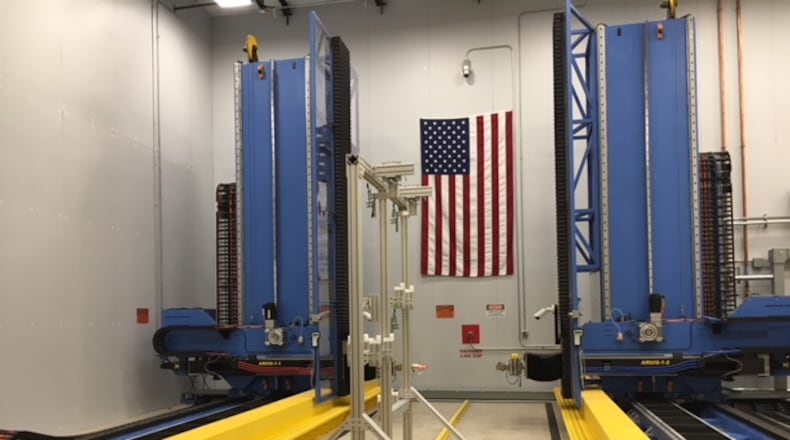Since then, the plant’s story has been one of steady growth, adding 55 employees since January — and cutting the ribbon on a 35,000-square-foot expansion Monday.
MORE: Visit the new Shook Construction HQ
“There were no exterior walls where we are standing six months ago,” said Claiborne Williams, head of development for the firm that oversaw construction at the plant, FD Stonewater.
The plant makes composite-material aerospace components, including the “hot trailing edge” of the B-2, located behind the bomber’s exhaust nozzles on its upper surface.
Each part must meet painstaking specifications and requirements and can take months to produce, said Richard Passmore, director of operations for the Beavercreek plant.
“This plane was manufactured a long time ago,” Passmore said in an interview after the ribbon-cutting. “We are furthering the capabilities of the aircraft with electronics and composites to provide that capability for our warfighters.”
RELATED: Northrop Grumman's Beavercreek plant is getting bigger
“Our adversaries are getting more sophisticated, so we need to get more sophisticated,” he added.
Wendy Williams, vice president and general manager of Northrop Grumman’s aero structures, said that workers at the plant have had to keep pace with the B-2’s growing demands, learning how to make parts “invisible” to radar as the plane itself evades radar detection, even with its sweeping, recognizable 170-foot wingspan.
“This space will allow for a continued legacy of innovation,” Williams told an assembly of more than 150 workers at a plant ceremony.
U.S. Rep. Mike Turner, R-Dayton, agreed. “This (plant) will join a long legacy of aerospace innovation in our community,” he said.
Air Force Col. William Patrick, system program manager for the B-2 Division at Wright-Patterson Air Force Base, said the plant’s work and its expansion are “incredible for our B-2 weapons system and its continued survivability.”
Work at the Beavercreek plant will not only strengthen that survivability, but it will boost maintenance and durability as well, he said.
“Our B-2 is not going to go away for a while,” Patrick told workers.
About the Author

